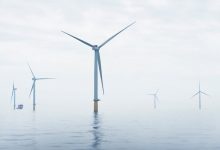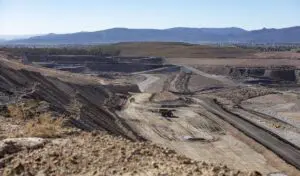Australia’s fledgling offshore wind industry is poised for another major growth spurt, with the Albanese government opening consultation on the nation’s second official development zone, in the Pacific Ocean off the coast from the New South Wales Hunter region.
Federal energy minister Chris Bowen said on Thursday that the government is seeking feedback from industry and community on how best to harness the offshore wind resource alongside the Hunter, a manufacturing powerhouse traditionally powered by coal.
The announcement this week is a promising sign of new momentum for Australia’s offshore wind industry, which just two months ago welcomed the formal declaration of the nation’s first official development zone in Victoria, off the coast of Gippsland.
The Gippsland offshore wind zone covers roughly 15,000 square kilometres offshore, running from Lakes Entrance in the east to south of Wilsons Promontory in the west, and at the time of its declaration counted more than 10GW of projects proposed for development.
The NSW Hunter region forms part of the recently declared NSW Hunter-Central Coast Renewable Energy Zone (REZ), named as the state’s fourth REZ – and as it happens the first to include access to offshore wind, although these projects will be developed in Commonwealth waters.
The Hunter-Central Coast REZ is a focus for the state government because it includes much of the infrastructure put in place for the state’s coal fired power stations – Liddell, Bayswater, Eraring and Vales Point – all of which are expected to close within the decade.
It also has good port and transport infrastructure, a skilled work force, and the capacity to repurpose existing assets, which has already attracted interest from the likes of Andrew Forrest’s Fortescue Future Industries, Japan energy giants, Origin and Orica, and multiple offshore wind players.
The Hunter is also home to Australia’s largest smelter, Tomago Aluminium, so establishment of a local offshore wind industry makes good sense on many levels.
And, as Bowen’s media release noted, the International Energy Agency classifies offshore wind as a “variable baseload technology” which makes it closer to the capacity of gas and coal-fired power plants, than onshore wind and solar PV.
It also noted that just one rotation of one offshore wind turbine provides as much energy as an average rooftop solar installation generates in one day, with less fluctuation than onshore wind.
“The world’s climate emergency is regional Australia’s jobs opportunity, and the Hunter is uniquely placed to capitalise on this,” Bowen said on Thursday.
“An offshore wind zone in the Hunter presents significant opportunities to create new energy sector and manufacturing jobs, drive economic growth and reduce emissions.”
“I’m encouraging residents from across the Hunter to have their say on the proposed area and what they would like to see from this offshore zone.”
So far, there is a handful of projects proposed for off the coast of New South Wales, but just a few of them in the Hunter zone, including a 2GW project being developed by OceanEx and Equinor, a 1.4GW project by BlueFloat and Energy Estate, and the biggest floating wind project proposed for Australian waters yet, now owned by French nuclear giant EDF.
Andy Evans, the CEO of Oceanex which has spent three working up its Novocastrian Offshore Wind project says NSW has “no time to lose” in developing a viable offshore wind energy to meet growing energy requirements later this decade.
“Making sure we arrive at a position where we have a viable offshore wind energy sector in the Hunter will require tremendous investment and effort to make sure we have the supply chains and workforces ready,” Evans said on Thursday.
“The Hunter already has the mindset, infrastructure and workforce needed to accelerate progress towards developing a new offshore wind industry. We want to leverage this potential as much as possible.”
Bowen says the consultation process for the Hunter offshore wind zone is an opportunity for community, workers, residents, industry groups and chambers of commerce to provide feedback. Submissions will run from February 23 to April 28.
The Department of Climate Change, Energy, the Environment and Water will also facilitate community information sessions, which will be held throughout the region during the consultation period.
The government has previously announced a further four regions earmarked for offshore wind zones. These include the Pacific Ocean region off the Illawarra in NSW, the Southern Ocean region off Portland in Victoria, the Bass Strait region off Northern Tasmania, and the Indian Ocean region off Perth/Bunbury.










